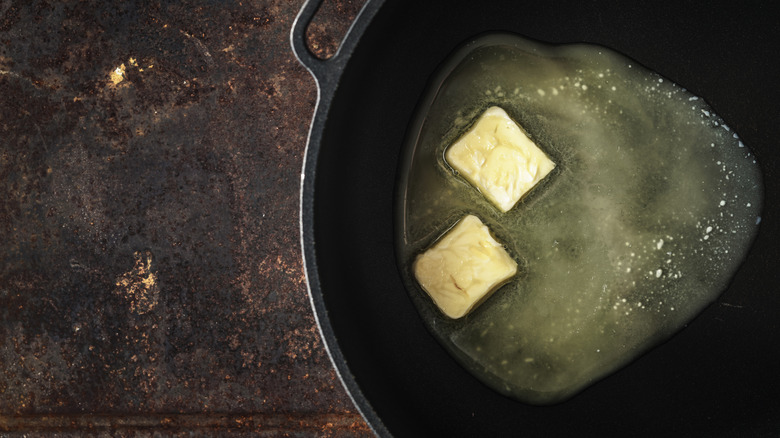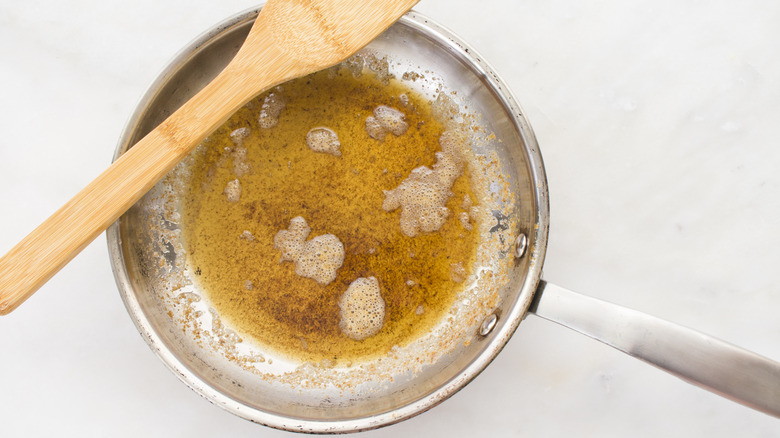Why You Shouldn't Use A Dark-Colored Pan When Making Brown Butter
It's a universal truth that brown butter makes everything better. Examples: brown butter sage sauce with any pasta, brown butter chocolate chip cookies, and brown butter mashed potatoes are all made better with butter's classier cousin. Why settle for regular butter when brown butter transcends?
You know you love it, but what actually is brown butter? Simply put, brown butter is the result of cooking butter until it darkens in color and deepens in flavor — drawing out nutty and toasty characteristics. More specifically, heat leads to causes the butter's amino acids and sugar to react in ways that change its flavor and color, according to America's Test Kitchen.
Though brown butter, or beurre noisette in French, sounds fancy, it's quite easy to make. All you need is butter and a little bit of patience. If you've ever made it before, you know it seems like nothing is happening, and then all of a sudden the butter is black! It happens fast if you're not paying attention, so it takes some babysitting. But if you follow this one tip, it'll make browning butter a lot easier.
When browning butter, a light-colored pan is clarifying
Apart from the intoxicating smell of brown butter wafting from the stovetop, the way to tell when brown butter is done is by observing the color change. However, dark-colored pans make the process much tougher to perceive. That's why The Kitchn recommends using a pan made from stainless steel or another light-colored option.
The reason having a light-colored pan is so crucial is that brown butter turns from a perfect amber color to black in the blink of an eye. According to the Science of Cooking, the water content of butter ranges between 13% and 17%, the milk proteins won't begin to brown until the water has evaporated. That evaporation will speed up quite a bit if the temperature climbs to 212 degrees Fahrenheit. Ergo, if you're not attending the butter, it can burn fast.
For perfectly brown butter every time, The Kitchn also recommends starting with uniform-sized pieces of butter, so they melt at a similar rate and constantly stirring over low heat. You can even make a large batch of brown butter to use in your everyday cooking. It can be frozen in ice trays or refrigerated in a tightly sealed jar (via Food52). It should last up to a couple of weeks in the fridge and longer in the freezer. Spoon the cooled brown butter into a pan to level up any meal or baked treat.

